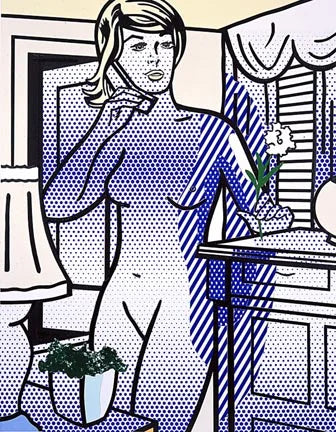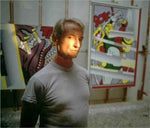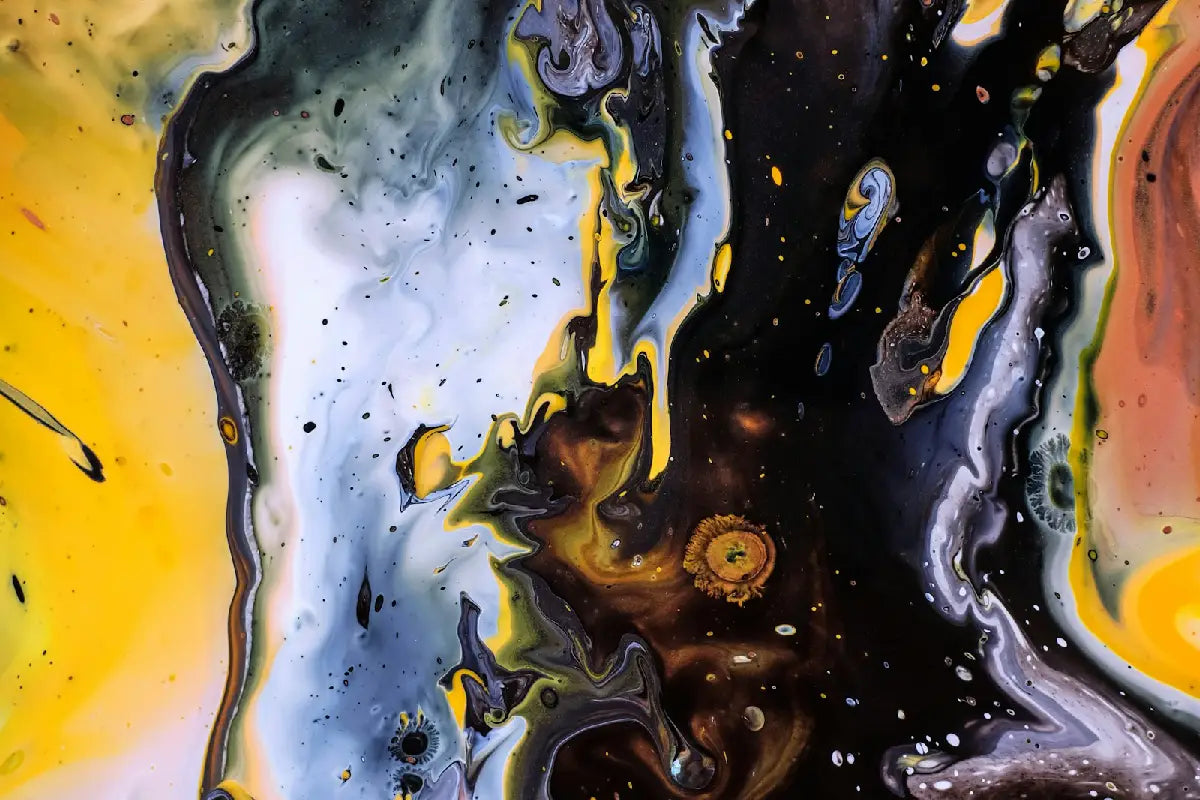
Collage for nude with white flower
Roy Lichtenstein
‘Collage for nude with white flower’, created by Roy Lichtenstein in 1994, is a striking piece of Pop Art that exemplifies the artist's unique approach to the female form and the integration of nature into modern art.
Cette œuvre est actuellement protégée par le droit d'auteur et n'est pas disponible à la vente. Elle est présentée uniquement à des fins éducatives et culturelles.
À propos de l'œuvre
Description
This vivid and playful artwork captures the essence of Lichtenstein's Pop Art movement, incorporating dynamic lines and bold colors to redefine the traditional representation of a female nude. The composition presents an abstract figure simultaneously celebrating and critiquing the norms of beauty within modern society. The figure, outlined with thick, black lines characteristic of Lichtenstein’s graphic style, is juxtaposed with delicately depicted white flowers which enhance the sensuality of the scene. This duality creates a visual dialogue between the elegance of nature and the bold portrayal of femininity, suggesting a rich interplay between the organic and the artificial. The use of color and line reflects Lichtenstein's penchant for blending commercial techniques, such as Ben-Day dots, with fine art practices. This complex layering of images and forms invites viewers to reconsider their preconceived notions of art, beauty, and the female figure, while emphasizing the nature of visual storytelling. Each element serves as a formal yet expressive device to both captivate and provoke thoughtful engagement from the audience.
Contexte
Caractéristiques
- Title: Collage for nude with white flower
- Artist: Roy Lichtenstein
- Date: 1994
- Style: Pop Art
- Genre: Nu
- Dimensions: 78.1 x 61 cm
- Tags: female-nude, Line
- Copyright: Roy Lichtenstein
Interprétation
À propos de l'artiste

Roy Lichtenstein
Artiste Certifié
19
Œuvres
Followers
Vues
Roy Lichtenstein est né le 27 octobre 1923 à Manhattan, New York, dans une famille juive de classe moyenne supérieure. Enfance influencée par sa mère pianiste et son père agent immobilier, il développe son intérêt pour l'art lors de ses années scolaires. Après des études à l'Université d'État de l'Ohio, il est enrôlé dans l'armée pendant la Seconde Guerre mondiale, où il continue à peindre. À son retour, il commence à enseigner et à explorer divers styles artistiques, avant de se concentrer sur le pop art dans les années 1960....
Avis & Discussions
Discussion critique
Partagez votre interprétation de l'œuvre
Découvrez d'autres tableaux
Artistes liés

Donnez vie à vos projets artistiques
Découvrez nos solutions sur mesure et notre expertise en reproduction d art













